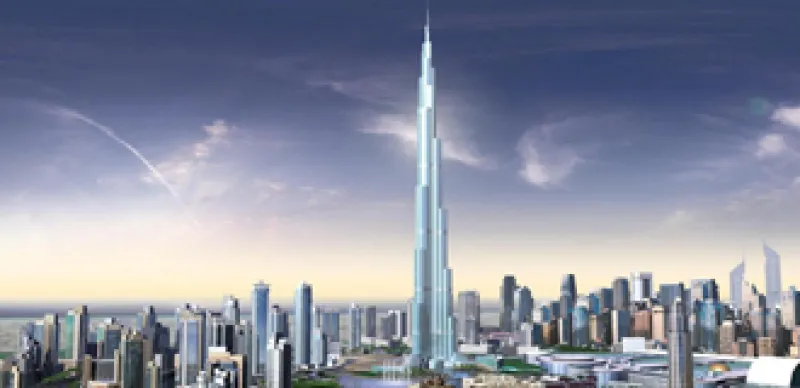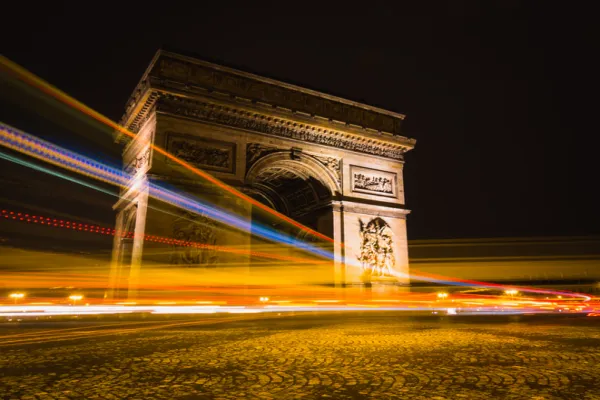What does $10 billion buy? For the oil-rich emirate of Abu Dhabi, which recently came to the rescue of its heavily indebted neighbor Dubai, the answer seemed to be stability as well as political and commercial influence. But the cost of those precious commodities could be set to rise dramatically.
Within days of Abu Dhabi’s December bailout, Dubai renamed its new landmark 160-story tower the Burj Khalifa, in honor of Sheikh Khalifa bin Zayed Al Nahyan, the emir of Abu Dhabi. The assistance also calmed financial markets in the Gulf and around the world. Dubai’s financial condition appears to have deteriorated in subsequent weeks, however, fanning fears of a wider economic fallout in the region and prompting fresh speculation about whether, and under what conditions, Abu Dhabi will provide additional support.
Dubai World, the emirate’s flagship holding company, is seeking to negotiate a standstill agreement with lenders on $26 billion in debt after narrowly averting a default in December. The rescue came in the form of a $5 billion purchase of bonds by the Abu Dhabi central bank and a separate $5 billion purchase of bonds by the National Bank of Abu Dhabi and Al Hilal Bank, an Islamic lender owned by the government of the United Arab Emirates. Dubai’s debt woes extend well beyond that one company, though. Government-related entities have an estimated $6.6 billion in debt coming due this year and as much as $24 billion in 2011, according to estimates by bankers and rating agencies.
Uncertainty about Dubai’s ability to service its debt was heightened last month when Standard & Poor’s withdrew its ratings on another government-related entity, property developer and business park operator Dubai Holding Commercial Operations Group, after having slashed it to B from BB+. S&P said it acted because of a “lack of market transparency [and] reliable market data and the level of available financial information,” as well as “lower certainty about ongoing support from the Dubai government, which we previously factored into the rating as a key credit strength.”
The Dubai debt crisis comes at a time when countries in the Gulf are already grappling with the combined effects of the global financial crash and a wave of corporate scandals that have exposed woeful standards of governance and transparency. The consequence is that regional governments face a growing chorus of demands to adopt major reforms or risk having their access to international capital markets curtailed.
“International lenders are undertaking a reassessment of risk appetite toward the region,” says Julian Ashall, chief operating officer of Lloyds Banking Group in Dubai. “Events have cast a spotlight on the adequacy of bankruptcy provisions. The absence of bankruptcy laws and the untested nature of the region’s legal systems create an uncertainty that needs to feature prominently in risk assessment and pricing decisions.”
Mohieddine Kronfol, managing director of Algebra Capital, a Dubai-based asset management firm, says lenders and investors in the region can no longer allocate capital on the basis of implicit government guarantees, as was commonly done in the past. “The Dubai precedent confirms that sovereign credit needs to be priced differently from corporate credit, and will tremendously increase pressure to improve transparency and governance,” he contends.
The debt troubles have also cast a cloud over Islamic finance. The Abu Dhabi bailout helped Dubai World’s property arm, Nahkeel, avert a threatened default in Decem ber on a $3.5 billion sukuk, the largest such Islamic borrowing. That narrow escape, however, heightened investors’ uncertainty about holders’ claims on a sukuk’s underlying assets in the event of a default. Paul McNamara, editor of an authoritative report on sukuk finance published by Middle Eastern financial information provider Zawya, sees a negative impact on conventional and Islamic debt markets in the region. “Sovereigns and corporates in the Gulf Cooperation Council may find there is diminished appetite for their debt outside of the region — and possibly within the region itself,” he says.
The ruler of Dubai, Sheikh Mohammed bin Rashid Al Maktoum, has acknowledged calls for greater transparency by passing by decree a reorganization law that paves the way for companies to apply for creditor protection if they are unable to restructure debt. The Dubai International Financial Center Insolvency Law is based on U.K. insolvency legislation and calls for the creation of a special tribunal of three to five internationally recognized judges, including the likes of Sir Anthony Evans, chief justice of DIFC Courts and a former High Court judge of England and Wales, to supervise any reorganization.
The debt problems and risks of a drying up of foreign liquidity are having a widespread impact in the United Arab Emirates. The country’s banks are paying an average spread of 360 basis points over LIBOR on their senior debt currently, up from a modest 25 to 40 basis points previously, points out Kronfol.
“Funding costs have been rising, especially after the November 25 Dubai World restructuring announcement,” says John Tofarides, an analyst at Moody’s Middle East. Only National Bank of Abu Dhabi and Abu Dhabi Commercial Bank managed to draw on their existing medium-term note programs before November, he notes. “For the rest of the banks, and especially Dubai-based banks, the uncertainty that the Dubai World restructuring request creates puts more pressure on funding costs.”
Banks in the Gulf have been hit hard by the rise in funding costs for senior debt since the collapse of Lehman Brothers Holdings. Giambattista Atzeni, vice president of corporate trust at Bank of New York Mellon, thinks banks must insist on greater levels of transparency and distinguish between guarantees offered. “We have learned from the global financial crisis a new level of due diligence by all parties in a transaction is required. There is no reason why this should not also apply to Middle Eastern–GCC transactions, specifically for what is related to implicit and explicit guarantees. Governments and sovereign entities can provide financial support to strategic corporates. However, it needs to be taken into account they do this entirely at their own discretion.”
Dubai World has a narrow window in which to address its debt problems. The Dubai Supreme Fiscal Committee and the Dubai Financial Support Fund, government steering committees charged with managing the crisis, will meet the company’s debt obligations and working capital needs until April 30 provided that Dubai World can negotiate a standstill agreement, which in turn would give it time to agree on a restructuring of its debts with 97 creditor banks. A coordinating committee is expected to be chaired by Royal Bank of Scotland when formally mandated; a deal is expected to generate about $100 million in fees for law firms, banks and public relations teams.
“Dubai has a long-term value proposition, which most lenders realize,” says one banker closely involved in the debt talks. “There is no silver bullet that will fix the current problems, and therefore how Dubai conducts itself will influence that outcome. It could take 18 to 36 months to answer that question.”
Several Dubai World subsidiaries, including international port operator DP World, investment company Istithmar World and ship repair concern Drydocks World, are effectively ring fenced and will not be included in the debt restructuring because they are on “stable financial footing,” Dubai World said in a statement.
Other entities face some big debt payments in the short term. Borse Dubai, the holding company for Dubai Financial Market and owner of a 19.9 percent stake in Nasdaq OMX and a 22 percent stake in the London Stock Exchange, exercised a one-year extension option on a $2.5 billion loan that had been due to be repaid this month. Development company Limitless is due to repay a $1.2 billion loan in March, and Nakheel is scheduled to repay a 3.6 billion-dirham ($983 million) bond in May. These issues underscore one of Dubai’s major errors: namely, financing long-term projects with short-term financing, says Farouk Soussa, head of Middle East government ratings at Standard & Poor’s.
Dubai faces some equally big bills in the medium term, Soussa notes. S&P estimates that Dubai government–related entities have to repay $6.6 billion in maturing loans and bonds this year. “Around half of that is due from Dubai World and Nakheel, and thus subject to restructuring,” he says.
An additional $17 billion comes due in 2011, Soussa estimates. That total includes about $3 billion from Dubai World and affiliated companies, he says. The single largest obligation is that of Investment Corp.of Dubai, a government vehicle that has holdings in most of the emirate’s banks and industrial companies. ICD has $6 billion in syndicated facilities due to be repaid in September 2011. “We would stress this is public debt, and there is likely to be a significant amount of private debt that we do not have visibility on,” points out Soussa.
Marios Maratheftis, regional head of research at Standard Chartered in Dubai, thinks public sector debt maturities in 2011 may be even larger. “I estimate that there will be debt maturities of about $24 billion in 2011, and this does not include bilateral loans.”
With so much debt coming due in such a short period of time, Dubai could face pressure to unload assets. Although the government could readily sell stakes in some of its stronger holdings, such as DP World, officials are believed to want to avoid a fire sale of important assets. Bankers regard Dubai World’s request for a standstill as a negotiating ploy to provide time for the value of its assets to recover from low valuation levels precipitated by the financial crisis. Soussa believes that the government is likely to liquidate assets to make repayments or enhance recovery on restructured debt but will not sell assets of a strategic nature.
The pressure for asset sales will likely intensify if ICD struggles to refinance its syndicated facilities. ICD is government-owned and essentially operates as the sovereign wealth fund of Dubai. It manages 28 companies and holds some of Dubai’s most prized assets, including Emirates airline, Dubai Aluminium Co., Emirates NBD bank, property developer Emaar and Dubai Duty Free. But just as with Dubai World, ICD enjoys no explicit government guarantee and each company in the portfolio operates on a stand-alone basis.
The chairman of Emirates airline, Sheikh Ahmed bin Saeed Al Maktoum, said recently that the carrier could make an initial public offering of stock in the next few years if market sentiment improves, but some observers discount this possibility. “Prospects for Dubai government–related entity IPOs will remain dim in the absence of investor confidence in Dubai’s general restructuring plans,” asserts Algebra’s Kronfol.
Dubai’s debt woes have drawn attention to the opaque style of business and poor standards of corporate governance that prevail in the wider Gulf. Until Dubai’s announcement international investors had been preoccupied with the public spat between Saudi Arabia’s Saad Group and Ahmad Hamad Algosaibi & Bros., companies that owe a total of $22 billion to upward of 80 local and international banks. Speculation has flared in banking circles recently that Saad has cut a debt deal that favors local banks over foreign lenders. If so, international institutions would be likely to pull back from the region in a significant manner.
“The mere fact there are conflicting signals is likely to unnerve foreign banks,” says Paul Gamble, head of research at Jadwa Investment in Riyadh. “It’s not helpful to the Kingdom’s reputation as it needs access to long-term financing.” Dubai’s predicament is also a wider concern for the Gulf, he adds: “Qatar and Bahrain may stand to gain from the crisis, but there is also a broader risk to the region’s reputation and image.”
Banks in the UAE have a declared exposure of $2.9 billion to the troubled Saudi groups, and Dubai’s debt problems merely accentuate the strain on these institutions.
Standard & Poor’s recently downgraded the long-term credit ratings of National Bank of Dubai, Mashreq Bank and Emirates Bank International to BBB from A-, citing concerns about their exposure to Dubai-based corporate government-related entities, including Dubai World and its property arm, Nakheel. It also lowered the long-term rating of Dubai Islamic Bank to BBB- from BBB+ and had earlier placed Abu Dhabi Commercial Bank on credit watch as a result of the bank’s exposure to Dubai World. ADCB is owed a total of $604 million by Saad Group and Algosaibi. Mashreq Bank has an exposure of $400 million to Algosaibi.
S&P also recently downgraded DP World, DIFC Investments, Jebel Ali Free Zone, Dubai Multi Commodities Centre Authority and Emaar Properties PJSC. Other government-related companies may also have to seek debt restructurings. According to Morgan Stanley, Dubai Holding, Dubai Holding Commercial Operations Group, Borse Dubai and Dubai Sukuk Centre may join Dubai World in such restructurings, which could increase the overall level being restructured to more than $46 billion. Dubai Holding’s debt is thought to be about $12 billion, with $1.8 billion due in the first half of 2010, according to Bank of America Merrill Lynch.
Dubai Holding has denied that it is facing any problems. Dubai Holding Commercial Group criticized S&P for dropping its rating of the company, contending that the agency had made factual errors in its statements and did not understand the company’s business.
Analysts say Dubai’s handling of the crisis has been a textbook example of poor public relations and a lack of understanding of project financing. Dubai’s total debt is estimated to be between $80 billion and $150 billion. The bulk of that is essentially short-term, which puts a high priority on reaching a durable debt restructuring agreement.
Beyond the bailout there are political implications both immediate and longer-term that could stoke tensions. Despite the exceptional level of Abu Dhabi’s rescue package, there is little evidence to suggest the emirate has sequestered or taken control of major assets in Dubai. According to a person with knowledge of the situation, doing so would be “politically untenable” at the current time. More worrying, however, is the convergence of several events that could place a considerable strain on Abu Dhabi’s own resources. In addition to the further probability of short-term support for Dubai, the UAE central bank may have to intervene to support the struggling banking sector, where loans exceed deposits by 24.4 billion dirhams, according to the most current central bank data. That is not all. Provisions for bad loans in the UAE surged by 68 percent, to 32 billion dirhams, in November, compared with a year earlier. With the central bank’s stated commitment to the banking system, Abu Dhabi could be called on to support central bank intervention. The oil-rich emirate is also engaged in its own ambitious spending plans in infrastructure and real estate, the latter of which troubles some observers given the recent experience in Dubai.
How Dubai will emerge from its current predicament is yet to be determined. Simultaneously accused of hubris, arrogance and extravagance, the emirate is likely to undergo some soul-searching as it contemplates a reset of the current vision of establishing itself as the leading international financial center between Hong Kong and London. Descriptions of Dubai as a “city-state” are likely to be replaced by references to its place in the UAE federation. Yet there is also a mutual dependence between these erstwhile rivals. Dubai needs Abu Dhabi’s financial backing and Abu Dhabi needs Dubai’s fast-growing pool of international talent and capital. Abu Dhabi has also invested heavily in Dubai real estate and therefore has no interest seeing its neighbor sink.
“What we need to see is the UAE working together to resolve the current crisis. That’s good for Dubai and good for the country,” avers one banker with exposure to Dubai debt.
“Close cooperation between Dubai and Abu Dhabi is good for both,” says Standard Chartered’s Maratheftis. “This is what the narrowing of spreads in the [credit default swaps] market has shown us.”
The quality of Dubai’s infrastructure and the sophistication of its financial center continue to make it the destination of choice for companies looking to have a presence in the region. But the emirate can’t take that position for granted. Dubai faces growing competition from other Gulf states such as Qatar and Bahrain, which are keen to attract foreign direct investment and to develop their financial sectors.
Dubai enjoyed a respite from its debt gloom in December with the opening of the Burj Khalifa, the dramatic spire that stands out as the world’s tallest building by far. Now comes the hard work: restructuring the emirate’s debts and reforming the governance of its state-related companies. The outcome will determine whether the Burj goes down in history as the symbol of a grand vision, or a grand folly.






